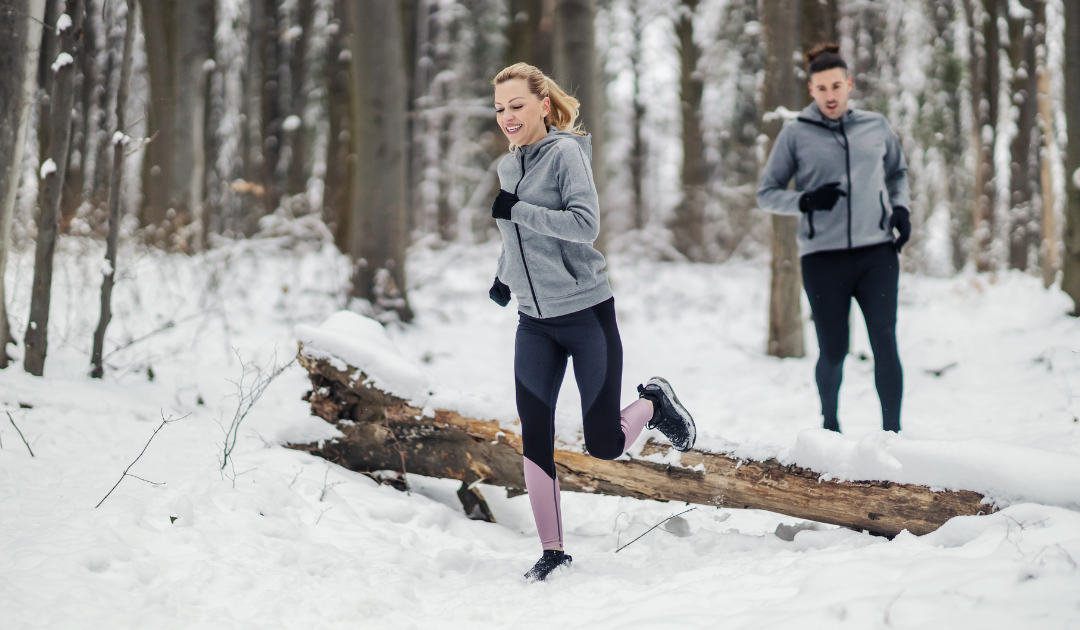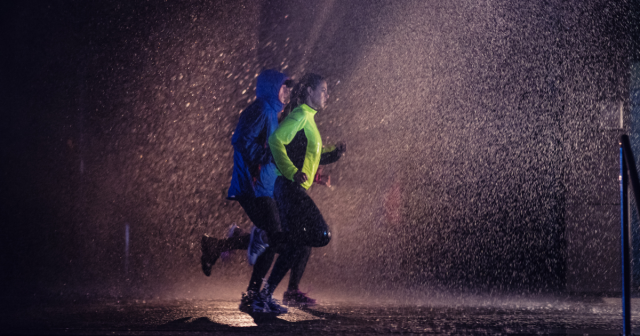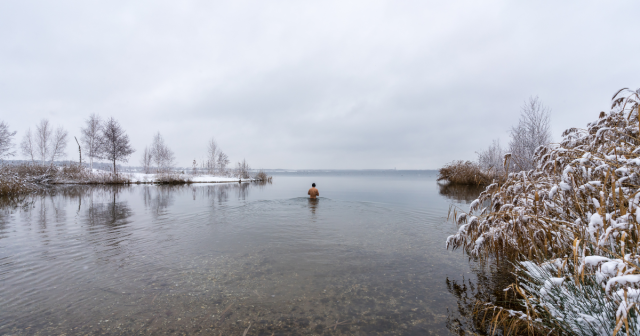Winter Workouts
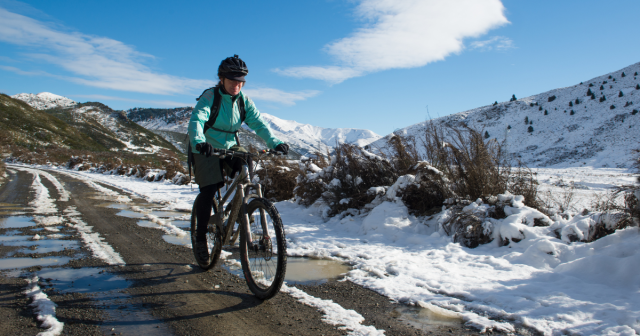
Calorie expenditure, improved fitness, higher serotonin levels, feeling energised and an improved immune system are all associated with outdoor winter workouts
The temperatures are plummeting, snow is forecast and you’re weighing up whether to do a winter workout or settle down to the latest Netflix series. The sofa’s so comfy but your body is twitching, you need that exercise and boost of endorphins. Is it a no-brainer? Do you need to think about it, or do you just get on with being active? The choice is yours and the winter workouts are a good time to reflect on your fitness mentality and question what sort of athlete you really are.
As Edinburgh based personal trainer, Jonathan Cooke, says “it’s not who you want to become, it’s who you are”. He calls this ‘identity-based motivation’, meaning that you should think of yourself as an active person in order to keep exercise as a fixture in your life throughout the year. He says, “Honestly, it never occurs to me not to exercise, because over the decades I have become the sort of person who does that kind of thing. As a life-long athlete myself, I relate to this, but amongst my clients I know it’s not always as easy as it sounds and excuses can be readily found during the winter months”.
Benefits of winter workouts
Whatever your goals or your sport, this is the time of year when you need to dig deep, pull on your training kit and keep moving. The biggest hurdle is getting started, but once you’re out there it won’t be long before you’ve warmed up and are feeling glad that you’re doing it.
Ideally exercise is for the long-term, to stay fit for life, come rain or shine. Your choice of an outdoor sport, be it rugby, rowing, football, hockey, tennis, running, skiing, to name but a few, will of course expose you to the elements. In the most brutal moments though do remember that there are many benefits of exercising in the cold, including being linked to a stronger immune system and better cardiac health, it will ward off the winter blues and boost energy as well as giving an opportunity to reconnect with nature.
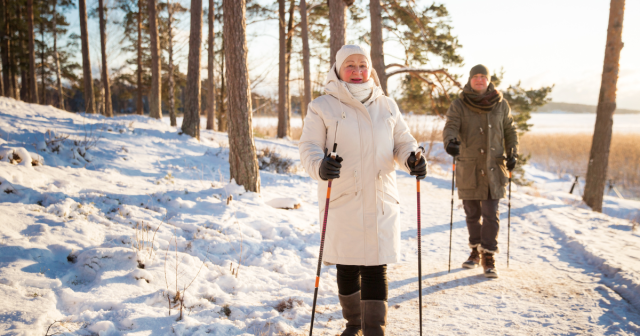
Health benefits associated with winter walking, particularly during the darker and colder winter months where a focus on mental wellbeing in just as important as the physical benefits.
When it seems to be dark most of the time, working-out in a cosy gym or at home might be the more tempting option, but finding a way to combine this with some exercise in the great outdoors will reap benefits. A study on Tokyo residents at the height of the Covid-19 pandemic revealed that those who spent more time outside reported better mental health and higher self-esteem.
Constraints to exercising outdoors in the dark
An unfortunate truth is highlighted by Caitlin Moran, writing in The Times magazine, about the constraints on women running outside in the dark during the winter because of their personal safety. She calls the winter the ‘Women Staying In’ season and warns women to be cautious when parks and normal running routes are dark and empty. This is a sad but realistic consideration, and perhaps early morning runs before work, or during a lunch hour are safer options. Alternatively, be part of a running club or nurture friends with similar schedules and motivation that you can have as regular running buddies on dark evenings.
Cold weather training kit list
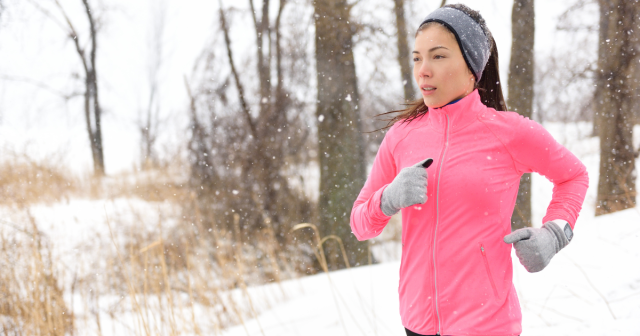
Exercising in the cold requires some preparation for it to be done safely and here are some reminders for your winter workouts:
What to wear
- Base layer – A sweat-wicking base layer made from synthetic fibres will move the water you sweat away from your body. Avoid cotton, which will trap a layer of water next to your skin and acts like a conductor for heat, meaning that you will chill more quickly and risk hypothermia.
- Polar fleece – to layer on top to trap a layer of warm air.
- Water-repellent shell – to keep you protected from the elements.
- Bright colours and reflective strips – to make you visible if you’re running near roads on gloomy days or dark evenings.
- Hat, gloves and thick socks – to protect your extremities. Choose wool or synthetic fibres to move water away from your skin. When it’s chilly your body distributes your blood to your core organs to keep them at the required temperature, hence cold fingers and toes.
- Shoes with good traction – watch out for slippery surfaces, especially black ice. Run where pavements have been gritted and be very wary on back roads and paths.
- Head or chest torch – essential for those dark runs.
Warm up
When it’s cold our muscles take longer to tense and our ability to burst into action is reduced so be sure to warm up thoroughly before starting your work-out to increase blood flow and temperature in muscles and decrease the risk of injury. Include dynamic continuous movements at low-intensity to mimic the exercise you are about to do and then move on to higher tempo drills, to minimise the time between the warm up and the actual workout.
Breathe right
It can be more difficult to breathe during cold weather as airway passages narrow. Breathing in through your nose can warm the air and make this easier but, if you’re needing to breathe heavily as you exercise, you could wrap a bandana around your mouth to help trap water vapour in when you breathe out to keep your next breath more moist and warmed.
Keep hydrated
You may not feel as thirsty during winter workouts as you do in the summer heat, but you are still losing fluids through sweat and you’ll see the water in the warm air you breathe out as it condenses in the cold. You will need to replace those fluids by sipping water.
Cool down
This sounds ironic if you are working out in cold temperatures but a proper cool down is important to normalise your heart rate and breathing. Do be aware that you will become chilled very quickly. It’s a good idea to gradually reduce the intensity of your exercise for the final 5-10 minutes to avoid going from flat-out to standing around. Static stretching is then advisable to reduce potential for muscle soreness.
As soon as practical you need to get out of your damp workout clothes, which will suck away warmth. Then take a warm shower and put dry, clean clothes on to keep you warm.
Well done for finding ways to continue with your winter workouts and be comforted by the fact that after December 21st, the shortest day of the year, the evenings will gradually become lighter. Though this will be imperceptible for a while, trust me, you will soon be enjoying balmy summer evenings, working out in the open air at your leisure and reflecting on the best ways to stay cool.

